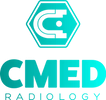
Power of MRI Imaging
The Power of MRI Imaging: MRI Technology
Embark on a journey into the realm of MRI imaging, where innovation meets precision to unveil the inner workings of the human body. With over 25 million scans conducted annually, MRI stands as a cornerstone in modern medicine, offering invaluable insights into diagnosing a myriad of conditions and ailments. Despite its widespread usage, many individuals may find themselves intrigued yet unaware of the intricate mechanisms behind this groundbreaking technology. At C-Med, we recognize the significance of MRI imaging in revolutionizing healthcare practices. Through this blog, we aim to shed light on the pivotal role MRI technology plays in enhancing patient care and treatment outcomes.
Past of Magnetic Resonance Imaging (MRI)
Many researchers, beginning in the early 1900s, contributed to the discovery of nuclear magnetic resonance (NMR) and characterized the physics underpinning magnetic resonance imaging. These contributions are included in the history of magnetic resonance imaging (MRI). Among the researchers was Isidor Isaac Rabi, an American physicist who was awarded the 1944 Nobel Prize in Physics for discovering nuclear magnetic resonance, a technique utilized in magnetic resonance imaging. Paul C. Lauterbur created MR imaging when he used magnetic field gradients to encode spatial information into an NMR signal in September 1971. He presented the theory underlying this method in March 1973.
Decades before MRI machines, scientists explained image contrast. Mansfield and Lauterbur (along with others) refined imaging techniques in the 1970s and 80s, leading to the first clinical scanners. Since then, MRI technology has greatly improved for its widespread medical use today.
The Differences Between MRI and Other body scanning Technologies
There are numerous types of diagnostic imaging procedures that employ different approaches to achieve different goals, and each type is more beneficial in a particular situation. The most often utilized imaging methods, aside from MRIs, are:
X-rays: The first and most widely used method of imaging the body is the X-ray. They target the area under study with a modest amount of radiation. A rapid, clear image of the bones and surrounding soft tissues can be obtained from the resultant photographs. In addition to being used to diagnose fractured bones, X-rays can also be used to diagnose certain illnesses including emphysema and pneumonia.
Computed tomography (CT) scans: Using radiation, CT scans produce three-dimensional images of the inside organs and tissues of the body. Cancers and other abnormalities are among the many illnesses that CT scans are used to diagnose. They can also give information regarding the location, size, and shape of tumors as well as aid in the guidance of biopsies
Ultrasound: To produce images of the inside structures of the body, an ultrasonic scan uses high-frequency sound waves. Tumors, cysts, and other anomalies can be found using these sound waves, which are produced by a device applied to the skin. Prenatal care frequently uses ultrasound to monitor a developing baby's development.
Positron emission tomography, or PET scan: A PET scan creates an image of the body by using a little amount of radioactive material. This kind of scan is used to detect neurological diseases like Alzheimer's disease as well as cancer. The resulting images can be used to quantify the quantity of molecules in a given area or the activity of individual cells.
Benefits and Advantages of MRI Technology
1. Detailed Soft Tissue Images: MRI excels at revealing intricate details in soft tissues, like muscles, ligaments, and the brain, which are invisible with X-rays.
2. Safer Option: Unlike CT scans and X-rays, MRI avoids using harmful ionizing radiation, making it a safer choice for frequent imaging or for vulnerable patients.
3. Versatile Diagnostic Tool: MRI can examine nearly any body part, from the head to the feet, aiding in diagnosing a broad spectrum of medical conditions.
4. Functional Insights (fMRI):This specialized MRI technique maps brain activity by detecting blood flow changes, aiding in the diagnosis of neurological disorders like epilepsy or Alzheimer's.
5. Non-invasive and Painless:MRIs are comfortable and require no needles or injections. This is especially beneficial for patients with needle aversion or bleeding disorders.
How C-med Can Help You
Our expert C-med team is committed to delivering top-notch MRI experiences to our patients. From our cutting-edge equipment to our personalized care and attention, we aim to make every visit to our centers comfortable and convenient.
We provide a variety of MRI services to aid in diagnosing issues spanning from sports injuries to neurological disorders. Our skilled MRI technologists will assess your medical history, address all your inquiries, and ensure your comfort throughout the examination.

